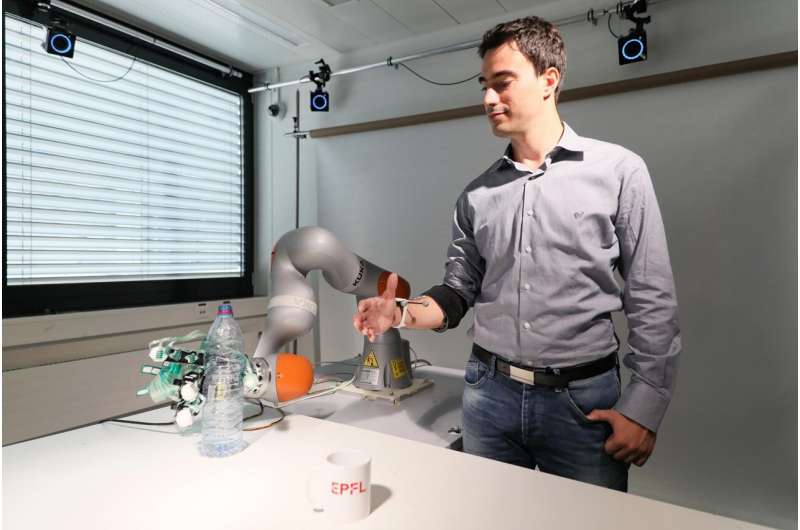This article has been reviewed according to Science X's editorial process and policies. Editors have highlighted the following attributes while ensuring the content's credibility:
fact-checked
trusted source
proofread
Augmenting the human body with a wearable robotic arm

Imagine having a third arm—a robotic one—to assist you with daily living. Silvestro Micera from EPFL, Switzerland, is engineering the human nervous system to make this a possibility.
For decades, professor Silvestro Micera of EPFL has dedicated his research to helping people with sensory and motor deficits to re-gain independence and quality of life by developing wearable and implantable technologies. But this is changing, as he begins to explore what it means to augment the human body.
The neuroengineer has thus far avoided the subject of transhumanism, which is a movement to enhance the human body and cognition with the help of technology. Now, this year AAAS in Washington, Micera will be presenting his "third arm" research that aims to equip health individuals with a robotic arm, essentially giving them a third arm to control.
The third-arm project aims to provide a wearable robotic arm to assist in daily tasks, using non-invasive techniques. The challenges are both technical and cognitive, but he believes that third-arm control is no longer a thing of the future.
"Research on three arm control could help us understand how learning is achieved in activities of daily living but these devices could also be used in logistics to facilitate complicated tasks," explains Micera.
Micera is known for being the first to provide sensory feedback— in real-time—to an amputee, with a bionic hand, during clinical trials that took place in 2013 with results that were published in 2014. This bionic technology relied on providing sensory feedback via transversal electrodes that were surgically implanted into major nerves in the amputee's arm.
Since then, he and colleagues have been building on that technology, providing improved touch resolution of textures with a bionic fingertip, improved embodiment of the prosthetic limb, and working towards a permanent, wearable prosthetic hand. This technology will be soon used to restore other motor and sensory function in other cases such as spinal cord injury or stroke.
While Micera's initial work about intelligent neuroprosthetics continue in parallel, one cannot help but imagine a future that is entering the realm of science fiction. Will we be equipping healthy individuals with transversal electrodes with sensory feedback, allowing them to control a third robotic arm as an extension of their own body?
More information: Conference session: aaas.confex.com/aaas/2023/meet … pp.cgi/Session/29964
Conference paper: aaas.confex.com/aaas/2023/meet … gapp.cgi/Paper/30741

















